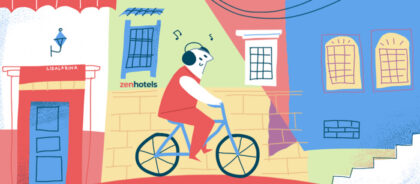Traveler essentials
- The cost of direct return flights to Bogota from London starts at around $1,580
- Currency: Colombian peso
- Main forms of public transport: planes and buses. Internal flights start at $32
- Accommodation: a bed in a hostel starts from $5 and a single room starts from $19
- Vaccinations: if you plan to visit the Amazon region, you are advised to get vaccinations for yellow fever. You should have this done no fewer than 10 days before the beginning of your journey. Check with your local pharmacy or GP surgery.
Be happy regardless of your circumstances
In 2018, along with Mexico and Costa Rica, Colombia was named as one of the world’s three happiest countries according to research by the University of Virginia. They based their findings on three indicators. Firstly, life expectancy, secondly, subjective assessments of an individual’s own happiness on a scale of 1-10, and, finally, ecological factors.
Despite the fact that earnings in Colombia are amongst the lowest in the world, the people here are simply happy with what they have. Many people live in small towns and villages in the mountains and on the coast. The happiest people I came across live in the jungles on the country’s Pacific coast. There is no internet there, the choice of goods in shops is very limited, and they sleep in hammocks in small wooden huts, but you can see in their eyes how peaceful and content they are. These people live in another dimension.
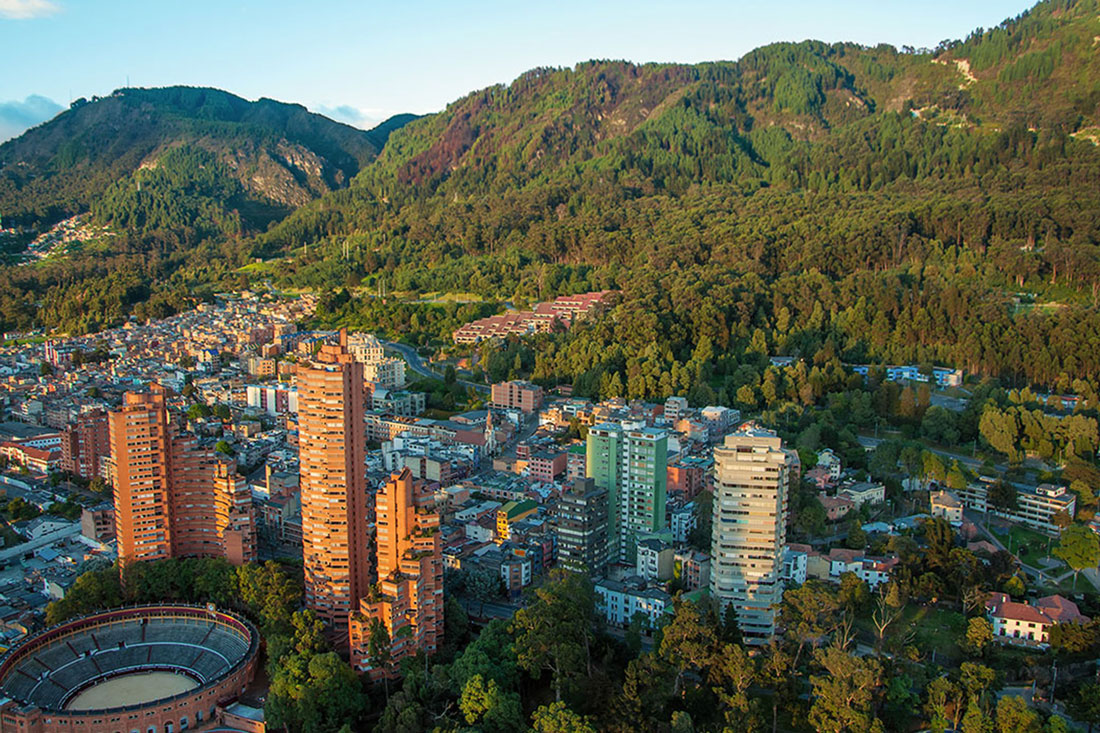
Be one big, happy family
One of my Colombian female friends comes from a typical Colombian family. She has 9 uncles, 10 aunts, and more than 20 cousins. If grandma suddenly decides she misses her grandchildren, she has them all round for dinner on Saturday! Family parties normally consist of around 50-60 people. Even if someone cannot attend a birthday party or wedding, they will come to the annual family holiday gathering – that is sacred! Family members come from all over Colombia and the world to be there.
Family in Colombia includes friends and work colleagues and forms the backbone of everyday life. It is their whole world.
Support your national team
Colombians were the largest group of international football fans to attend the World Cup in Russia in 2018. They outnumbered even the supporters from Brazil. More than 33,000 fans made up what turned out to be real yellow fever (yellow is the color of the national team’s strip).
Many people sold their cars or took out loans to get to the event. The minimum cost of a match ticket for international visitors was $100. Add to this the price of the flight at around $1,585 and the cost of accommodation. For example, one of their matches took place in Saransk, where a bed in a hostel reached prices similar to New York – $50. Supporting your home team costs a pretty penny when you’re Colombian.
If people had the cash or decided to get themselves into debt, they made the journey, but those who weren’t able to go in person took time off anyway to follow the games at home. Even in front of the TV screens, the tension was unbearable. Those who made the trip armed themselves with enormous flags, national symbols and happily went out in support of their team. They would fill the stadium with cries of “Si, se pueden” (“Yes, we can”), they wept with joy in victory and sobbed in sorrow when their team went out of the competition, but they still all supported each other as fans.
Up with the lark
Proximity to the equator makes for a hot climate, which in turn dictates the way the locals spend their day. The temperature in Colombian cities practically never changes throughout the year, but it does depend on the altitude on which the given town is located. On the Caribbean coast, for example, the thermometer shows a daytime temperature of 33ºC and, at night, around 27ºC. The country’s capital, Bogota, is however at an altitude of 2,640m above sea level. There, night temperatures vary from 12ºC-14ºC and, during the daytime, from 22ºC to 24ºC.
Things get going from early morning in Colombia before the heat really starts to bite. Most school timetables begin at 7am and offices and shops are open from 8am. Many even manage a jog or a visit to the gym before the day gets started.
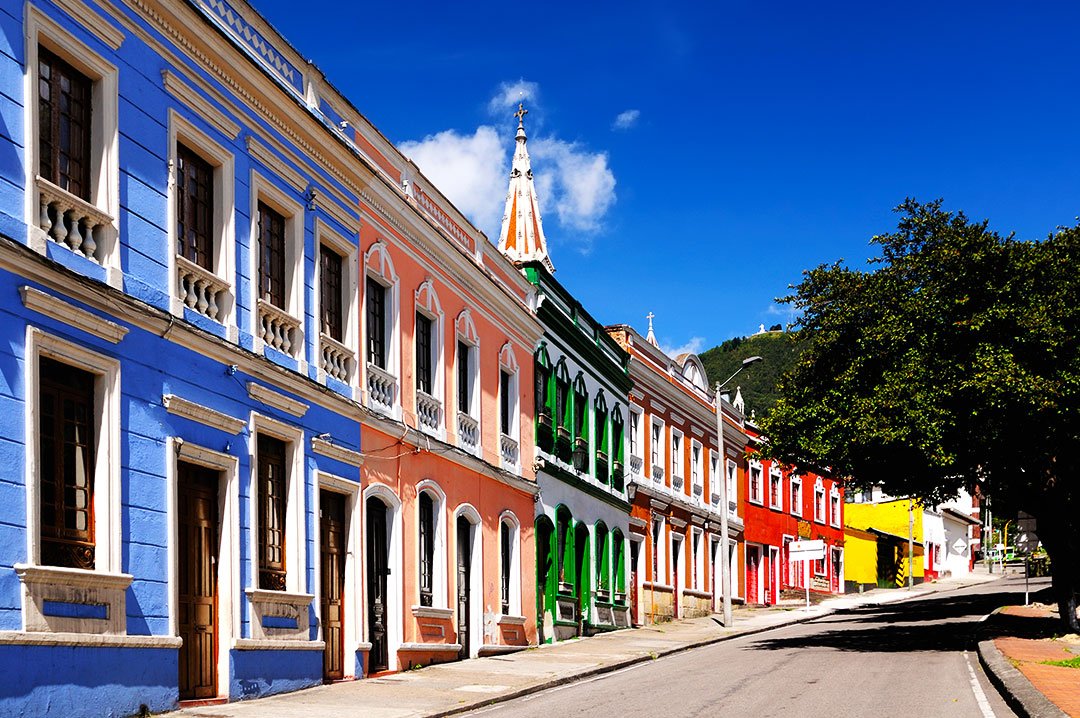
Everything comes to a halt between midday and 2pm – this is time for lunch and siesta. The sun beats down on the empty streets, and the locals hide in the shade. Even schoolchildren come home from school for a rest before going back in the afternoon. The day comes to an end early, too. Most people are already getting ready for bed by 9pm.
Mix and match food
We are used to having just one or two things on a plate at mealtimes, but in Colombia, the combinations are different from what you might be used to. Don’t be surprised if you end up being served pasta with rice. Rice and beans are the ingredients without which it would be difficult to imagine any Colombian meal.
Vegetables or fried green bananas might be added, or they might substitute beans for lentils. In addition to this, a huge hunk of meat or chicken will be served – the portions can be enormous. Such a meal, together with soup and a drink, would cost between $2 and $7. Set menus are called “menu” or “menu del día” and if you want to choose à la carte, then it’s the “carta” you need.
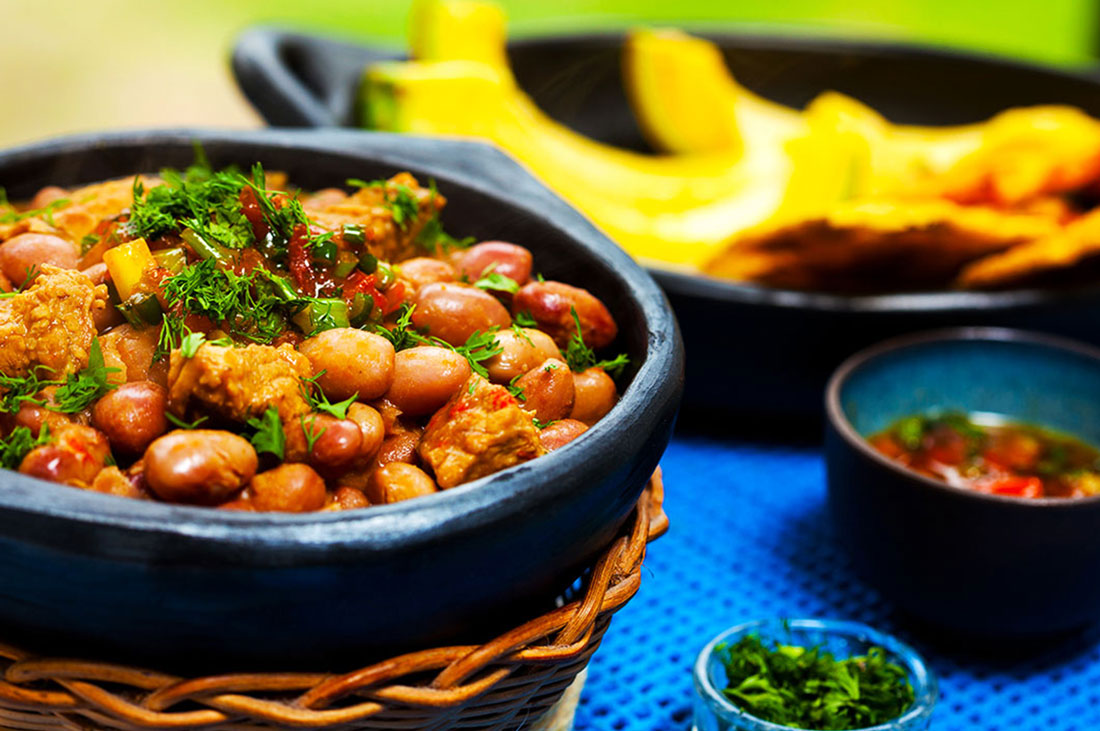
Don’t give them a papaya
One of the questions I am most often asked about South America is about safety. The Colombians have a very simple answer. “Just don’t give them a papaya”. This is a soft, malleable fruit, and if you put a knife against it, it will go through it like butter. Try the same with mango and the blade will hit the stone in the middle.
If you find yourself alone in a dark street at night, chatting away into the latest smartphone as you wave a fistful of dollars about, then that is the papaya you are offering the potential thief, that is, you make yourself easy pickings. The thief will decide whether or not to take advantage of you. It’s best not to provoke thieves and just observe basic safety rules.
- Don’t wander around at night alone, use a taxi. A journey will rarely cost more than $5
- Don’t show your phone or cash in the street, especially in big towns and cities; just take out what you need when you need it and quickly put it away again
- Always make sure you can see your bag with your valuables in (on beaches and in public places, etc.)
You should be particularly vigilant in the big cities like Cali, Bogota, and Medellin. Smaller places are normally quite calm, but you should be responsible for your own safety and security, and it’s best just to follow those simple rules wherever you are. In six months of independent travel around Colombia, I never had one incidence of theft or personal attack, even though as a blue-eyed blonde woman, I stood out like a sore thumb as a tourist.
Dancing
If you come across an old, bald Colombian in a salsa club, it doesn’t mean he’s there to watch the younger people. He will be moving to the salsa rhythm as the music takes him. To learn and practice salsa in its home city, head for Cali. In this city, dance is a form of self-expression and nothing less. Everyone in this town is an expert at the swift footwork and twisting movements, from young to old. If you want to enjoy a free lesson, then head for the La Topa Tolondra club on a Monday evening. At the beginning of the week, it’s not too bad because it’s not so busy and you can watch how the most colorful dancers do it. But on Fridays and Saturdays, it’s standing room only. However, that means you won’t wait long before you find your dance partner – they all dance!
Welcome overseas guests warmly
Colombia was cut off from the outside world for a long time because of internal unrest and a bad reputation, which hung over the country for many years. Many have heard the name Pablo Escobar – the world-famous drug baron who shook the country with explosions, battles with the authorities and other drug cartels towards the end of the 80’s – beginning of the 90’s. Escobar was shot by police more than 20 years ago, but it’s only in recent years that tourism has started to really develop.
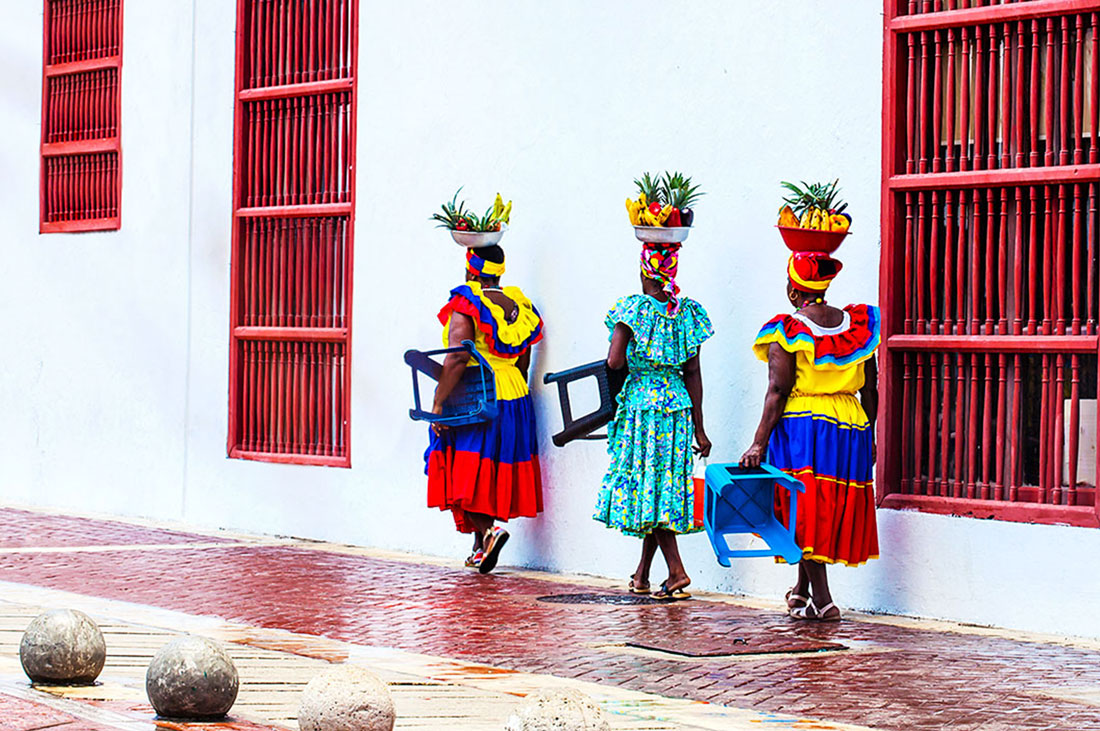
Photo: Anamaria Mejia/Shutterstock
A fair amount of good infrastructure is already in place in the form of hotels and roads, but there are still relatively few tourists. For this reason, the locals are genuinely happy to see you. For them, visitors to their country are proof that things are changing for the better. More than once, I have been on a bus, and people have helped me by telling me where to get off and even offering to accompany me to where I am headed.
Bring your own bottle
It’s traditional in Colombia to throw a party for birthdays and to even invite people you don’t know that well. It’s a real joy! But be aware that you would normally take your own drink to the party as the host would not necessarily know what you like. Everyone then puts their offerings together on a table and forms a communal bar. 99% of the time there will be Coca Cola. Usually, people bring beer and stronger drink like rum or the local alcoholic drink called aguardiente, which is based on aniseed and sugar cane and tastes a bit like pastis or Sambuca. You can buy it in normal supermarkets and a liter bottle costs around $15.
Taking part in a friend’s or family celebration is the best way to get close to and understand the locals better, so if you are invited, you should definitely say yes!
Party till dawn
One unusual way to get to know the cultural diversity of the country is to go to the carnival at Baranquilla. This is the second-largest carnival in South America after Rio and more than a million people prepare and participate in the festivities.
Getting there
Baranquilla is on the Caribbean coast. It is the regional capital and has a population of around a million people, so getting it is not difficult. You can, for example, fly from Bogota (flying time is about an hour and a ticket costs from $63). If you are coming in from Cartagena, there is an air-conditioned minibus which will take you there in three hours for just $8. For $11, there is a door-to-door service which will pick you up at your hotel in Cartagena and drop you at your hotel in Baranquilla.
The colorful parade features many types of dance, including cumbia, salsa, afro, and vallenato. Participants come from all over the country and form the whole teams. After the parade, the entire city is transformed into a huge open-air discotheque where tens of thousands of people dance till dawn.
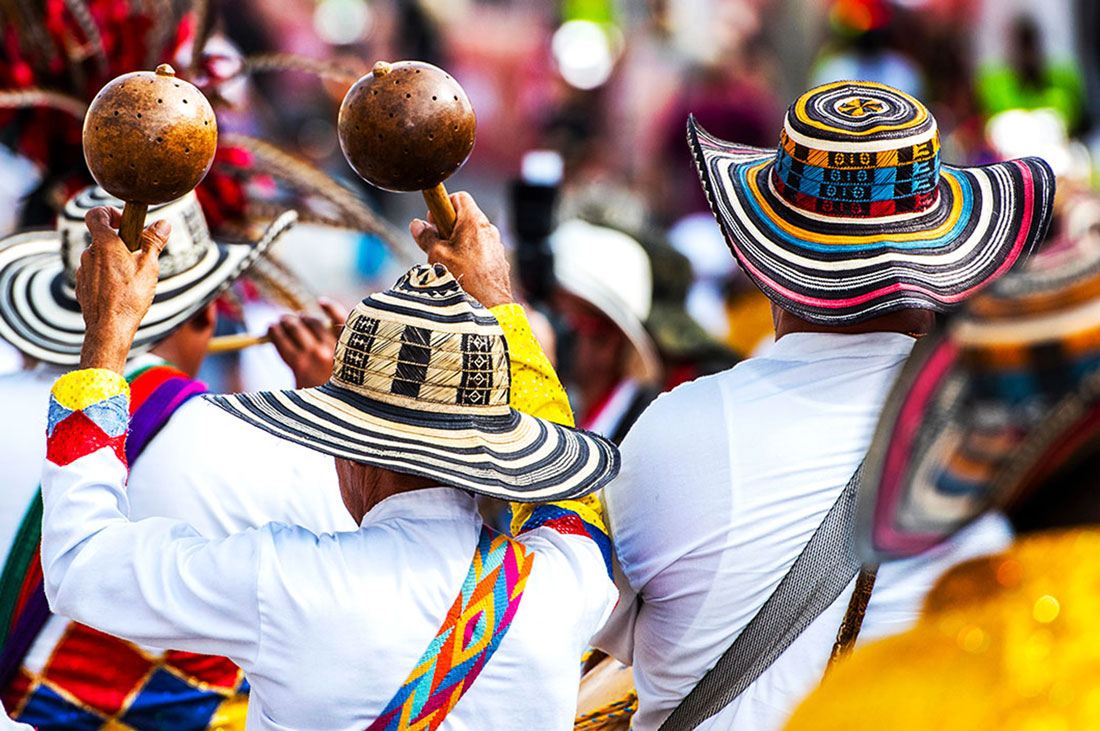
The carnival takes place each year just before the start of Lent. In 2020 the dates are from the 22nd to the 25th of February. It’s best to book your hotels well in advance, for example, the Caribe Princess or Prado 72. If you leave it until the last minute, you are likely to be left without a roof over your head. Fair enough, it’s warm at night in the Caribbean, but this really is not the best option. And don’t forget your outfit. The brighter, the better. You can either take an outfit with you or get one locally (try Calle 72) or from any of the street vendors who are by every entrance to the parade grounds.
Apart from the hotel, you will need to have access to the event itself. The parade proceeds down one of the main streets for several kilometers. Tiered seating lines the route. Places differ in view and overall quality. The cheap, plastic seats can go for as little as $5 on the day, but you will have to haggle for them in Spanish. If you want a guaranteed good seat in the shades high up on the tribune, you may need to pay as much as $100-$200 for the three days.
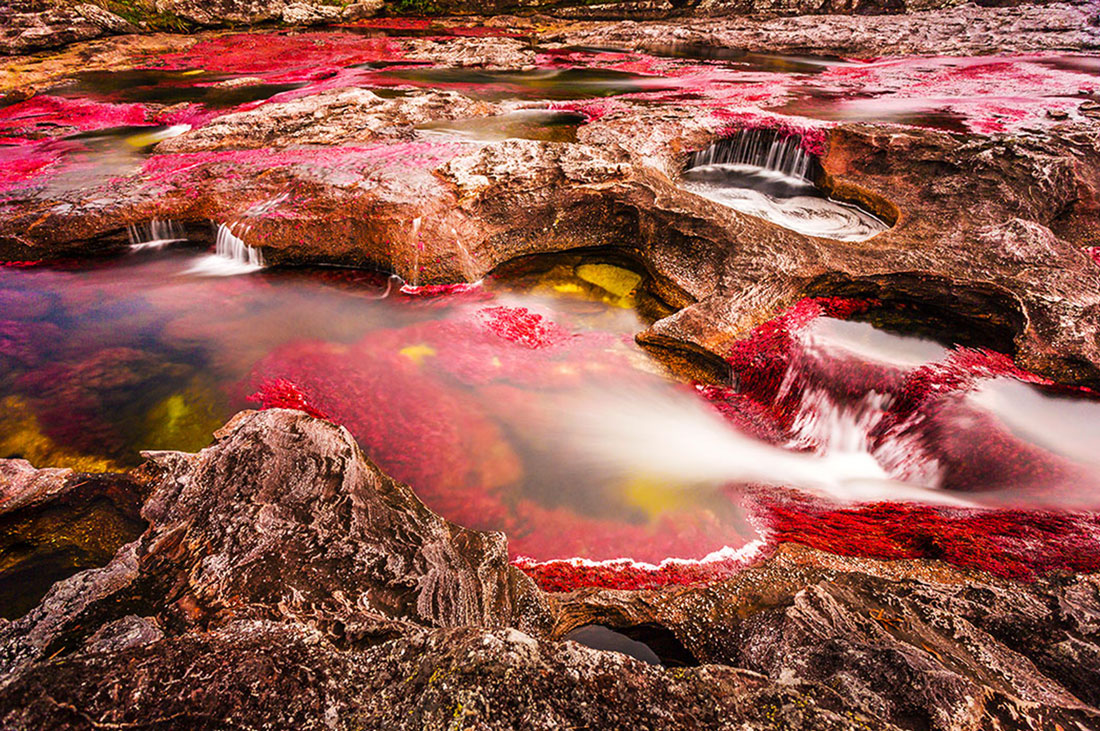
Travel around your own country
Even though Colombia is located so close to the equator, it has many different climatic zones. During a two-week stay, you can see the desert, mountains, jungle, the Caribbean Sea, and the Pacific Ocean. If it’s a varied holiday you want, then you’ve come to the right place. If you want to see the coffee plantations in bloom, come in October; if you want to see the whale migrations on the Pacific coast and the multi-colored river Cano Cristales, come in August; if you want to sunbathe on the snow-white sandy beaches of the Caribbean, then December to March is best.
Colombia offers a huge variety of ecological and cultural attractions, but one of the most valuable assets in this country is its people. No photo or article can ever quite express the warmth with which you will be welcomed to this country. It’s better to come once and experience it for yourself than to hear a hundred tales from other people. And remember, the biggest risk factor in Colombia is that you’ll not want to go home.

